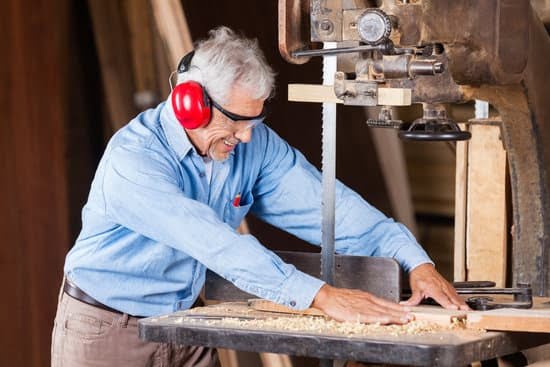Woodworking routers are essential tools in any woodworking project, providing precision and versatility to create intricate designs and details. Understanding how these machines work is crucial for both beginners and experienced woodworkers. In this article, we will delve into the world of woodworking routers, exploring their significance in woodworking projects and explaining the concept behind their operation.
Woodworking routers have long been used by craftsmen to shape, hollow out, and create decorative edges in wood. These powerful tools allow woodworkers to remove material from the surface of the wood quickly and accurately. Whether you are working on cabinetry, furniture, or even artistic pieces, knowing how to use a router correctly can greatly enhance your woodworking skills and produce professional-quality results.
In this introductory section, we will provide an overview of the basics of woodworking routers. We will explain the concept behind these machines and highlight their significance in various woodworking projects. From there, we will dive deeper into the history of woodworking routers, tracing its evolution from manual hand routers to the advanced machinery available today.
By understanding the foundations of woodworking routers, you will be better equipped to explore their components, types, functionality, applications, and troubleshooting tips that we will cover later in this article. So let’s get started on our journey into the fascinating world of woodworking routers.
History of Woodworking Routers
The history of woodworking routers is a fascinating journey that highlights the ingenuity and innovation of craftsmen throughout the centuries. From humble beginnings as handheld tools to the advanced machinery we have today, routers have played an integral role in shaping the world of woodworking as we know it.
In ancient times, woodworking routers were simple handheld tools that artisans used to hollow out or shape wood. These early versions consisted of a wooden body with a blade extending from one end, which was manually guided along the desired path. While these hand routers were effective for basic tasks, they required a great deal of skill and precision to achieve consistent results.
As woodworking techniques evolved over time, so did routers. In the 19th century, mechanization started to make its way into woodworking shops, leading to the invention of foot-powered router machines. These machines featured a pedal-operated mechanism that allowed woodworkers to power their routers without relying solely on manual force.
The real revolution in router technology happened in the 20th century with advancements in electric power tools. The electric router was introduced in the early 1900s, providing woodworkers with increased speed and efficiency. These early electric models were primarily used for trimming edges, but as technology progressed, more versatile routers were developed.
Today’s woodworking routers are highly sophisticated machines equipped with powerful motors, adjustable bases, and an array of accessories. Computer numerical control (CNC) technology has also been integrated into some routers, allowing for automated precision routing processes. Woodworking professionals now have access to a wide variety of router models specifically designed for different applications such as plunge routing, edge shaping, and joinery work.
Overall, the evolution of woodworking routers showcases how innovation and technological advancements have dramatically improved the efficiency and accuracy of this essential tool. From its humble origins as a handheld tool to today’s advanced machinery options, routers continue to be a crucial component in woodworking projects around the world.
Components of a Woodworking Router
Woodworking routers are versatile tools that can be used for a variety of tasks, from shaping and edging to carving intricate designs. To better understand how these tools work, it’s important to know the various components that make up a woodworking router.
The Motor
One of the key components of a woodworking router is the motor. This is what powers the machine and determines its overall performance. The motor can be either fixed-base or plunge, with each type having its own advantages and applications. Fixed-base routers are generally preferred for tasks that require precision and stability, such as cutting dados or routing edges. On the other hand, plunge routers are ideal for tasks like creating deep grooves or intricate designs.
The Base
The base of a woodworking router is another crucial component. It provides stability and support during operation. Two common types of bases include fixed-base and interchangeable-base systems. Fixed-base routers have a stationary base that remains in a single position throughout use, while interchangeable-base systems allow for different bases to be attached depending on the desired task.
The Collet
The collet is responsible for holding the router bit securely in place. It is located at the bottom part of the spindle shaft and plays a critical role in maintaining stability and preventing wobbling during operation. The size of the collet will depend on the diameter of the router bit being used, so it’s important to ensure compatibility between the two.
The Fence
For tasks that require precision and consistency, such as edge routing or creating rabbets, many woodworking routers come equipped with a fence. This is an adjustable guide that helps control the depth and movement of the router along a workpiece. The fence can be positioned parallel to or perpendicular to the bit depending on the desired outcome.
Understanding these components will not only give you insight into how woodworking routers work but also help you make informed decisions when choosing the right machine for your projects. Each component plays a vital role in the overall functionality and performance of the router, so it’s important to consider their features and capabilities before making a purchase.
With the right understanding and knowledge, you can harness the full potential of woodworking routers and achieve professional-quality results in your woodworking endeavors.
Types of Woodworking Routers
Woodworking routers come in a variety of types, each designed for specific applications and with unique benefits. Understanding the different types of woodworking routers can help you choose the right one for your woodworking projects. Here are some commonly used types of woodworking routers:
Fixed-Base Router
A fixed-base router is the most common type of woodworking router. It is designed for stability and precise cutting. The base of this router remains fixed in position while the bit is adjusted vertically through the depth adjustment mechanism. Fixed-base routers are suitable for tasks that require accuracy and control, such as dado cuts, grooves, and edge routing.
Plunge Router
As the name suggests, a plunge router allows you to plunge the bit into the wood at any point during operation. This type of router is versatile and perfect for tasks that require starting in the middle of a piece or making stopped cuts like mortises or flutes. Plunge routers have a spring-loaded design that allows you to move the motor up and down while the base remains stationary.
Trim Router
Trim routers, also known as laminate trimmers, are compact and lightweight routers commonly used for trimming laminates, veneers, or softwoods. They offer excellent maneuverability and are ideal for small trimming tasks such as chamfers, rounding edges, or creating decorative profiles.
Combination Router
Combination routers are designed to offer both fixed-base and plunge functionality in one machine. These versatile routers provide flexibility and convenience by allowing you to switch between fixed-base mode for precision routing and plunge mode for more complex cutting tasks.
Each type of router has its own strengths and applications depending on your specific needs. Consider factors such as the size of your projects, desired level of precision, versatility requirements, and budget when choosing a woodworking router.
Remember to always prioritize safety and consult the manufacturer’s instructions before operating any woodworking routers or tools. With the right router in hand, you can achieve professional-quality results in your woodworking projects.
Understanding Router Bits
Woodworking routers are versatile machines that play a crucial role in achieving precision and accuracy in woodworking projects. One of the key components that contribute to the functionality of woodworking routers is the router bit. In this section, we will explore the importance of router bits, their different types, and suitable applications for each.
Router bits are cutting tools that fit into the collet of a woodworking router. They come in various shapes and sizes, allowing woodworkers to create a wide range of cuts and designs. The type of router bit used determines the shape and size of the cut or groove in the wood.
There are several common types of router bits that every woodworker should be familiar with. Straight bits are one of the most basic types, featuring a straight cutting edge that produces clean and accurate cuts. These bits are commonly used for edging, grooving, and trimming operations.
Another popular type of router bit is the flush trim bit, which is designed to make flush cuts when trimming edges or patterns in wood. This type of bit is often used in template routing or to duplicate an existing profile.
For more intricate designs and decorative moldings, there are specialized bits such as cove bits, chamfer bits, rabbeting bits, and roundover bits. Each has its own unique shape and purpose in woodworking.
| Router Bit Type | Suitable Applications |
|---|---|
| Straight Bit | Edging, Grooving, Trimming |
| Flush Trim Bit | Template Routing, Profile Duplicating |
| Cove Bit | Curved Moldings, Intricate Designs |
| Chamfer Bit | Beveling Edges, Creating Angled Cuts |
| Rabbeting Bit | Rebates, Rabbets, Multiple Depths Cuts |
| Roundover Bit | Creating Rounded Edges, Softening Corners |
How Woodworking Routers Operate
Woodworking routers are powerful and versatile tools that can be used for a variety of tasks in woodworking projects. Understanding how they operate is essential for achieving precise and professional results. In this section, we will provide a step-by-step guide to using a woodworking router, along with safety precautions and best practices.
Step 1: Familiarize Yourself with the Router
Before using a woodworking router, it is important to become familiar with its different components. Take the time to understand the purpose and functionality of each part, such as the base, motor, collet, and depth adjustment. This knowledge will enable you to use the machine effectively and safely.
Step 2: Choose the Right Router Bit
Selecting the appropriate router bit for your project is crucial for achieving the desired outcome. Different bits are designed for specific tasks, such as edging, grooving, or shaping. Consider factors such as the material being worked on and the design you want to create when choosing a router bit.
Step 3: Secure Your Workpiece
To ensure stability while using a woodworking router, it is important to secure your workpiece firmly in place. This can be done using clamps or a vice grip. Make sure that your workpiece is securely fastened before moving on to the next step.
Step 4: Adjust Depth and Speed
Set the appropriate cutting depth by adjusting the depth adjustment mechanism on your woodworking router. Start with a shallow cut and gradually increase it until you achieve your desired result. Additionally, adjust the speed of the router depending on the type of material and cutting action you are performing.
Step 5: Plan Your Route
Before starting your cut, plan out your route carefully. This includes deciding whether to move clockwise or counterclockwise around your workpiece. It is recommended to start against the direction of rotation for better control over your cuts.
Step 6: Begin Routing
Once you have planned your route, it’s time to start routing. Hold the router firmly with both hands and switch it on. Slowly lower the bit onto your workpiece, making sure it is in contact before moving it along your planned route. Move at a steady pace and maintain an even pressure throughout the cut.
Step 7: Practice Safety Precautions
While using a woodworking router, safety should always be a priority. Wear protective goggles to shield your eyes from flying wood chips, and use hearing protection if necessary. Always keep your hands away from the cutting area and be cautious of any loose clothing or accessories that could become entangled in the machine.
By following these step-by-step guidelines and practicing safety precautions, you can effectively operate a woodworking router and achieve professional-quality results in your woodworking projects. Remember to familiarize yourself with the specific instructions provided by the manufacturer for your particular model of router for optimal performance.
Creative Applications of Woodworking Routers
Woodworking routers are not limited to traditional woodworking projects. They have also become an invaluable tool for artists and craftsmen looking to unlock their creative potential in various artistic endeavors. In this section, we will explore the wide range of creative applications of woodworking routers and provide readers with innovative and captivating examples to inspire their own artistic pursuits.
Creating Intricate Designs
One of the most exciting aspects of using a woodworking router for artistic purposes is the ability to create intricate and detailed designs on different materials. With the right router bits and techniques, artists can carve out beautiful patterns, shapes, textures, and even 3D reliefs on wood, plastic, or other suitable materials. From ornate furniture decorations to elegant wall panels or sculpture pieces, the possibilities are endless when it comes to adding intricate details with a woodworking router.
Custom Sign making and Lettering
Woodworking routers are widely used by sign makers and lettering enthusiasts for creating custom signs with unparalleled precision and clarity. By using specific router bits designed for lettering or sign-making purposes, artists can easily carve out beautifully crafted letters, logos, or decorative elements on wood or other mediums. Whether it’s a personalized wooden address plaque or an eye-catching business signboard, woodworking routers allow artists to express their creativity while achieving professional-looking results.
Marquetry and Inlay Work
Woodworking routers are also indispensable tools when it comes to marquetry and inlay work. Marquetry involves cutting thin veneers into intricate shapes that fit together like puzzle pieces to form decorative patterns on furniture surfaces or other wooden objects.
Using a woodworking router equipped with precision router bits allows craftsmen to achieve clean and precise cuts necessary for creating stunning marquetry designs. Similarly, inlay work involves embedding small pieces of contrasting material into a larger base material to create decorative motifs or images – once again, skillful use of a woodworking router is essential for achieving precise cuts and seamless integration of the inlay pieces.
These are just a few examples of the numerous creative applications of woodworking routers. From creating geometric patterns on furniture to adding decorative elements on cabinetry or crafting intricate wooden jewelry, woodworking routers enable artists to push the boundaries of their creativity and achieve extraordinary results in their artistic endeavors.
Whether you’re a beginner looking to explore new creative possibilities or an experienced woodworking artist seeking to expand your artistic horizons, incorporating a woodworking router into your toolkit can open up a world of exciting possibilities.
Troubleshooting Common Router Problems
Woodworking routers are powerful and versatile tools that can greatly enhance the quality and efficiency of woodworking projects. However, like any machine, they are not immune to problems and malfunctions. In this section, we will discuss some common router problems that woodworkers may encounter and provide practical solutions to fix these issues on the fly.
One common problem with woodworking routers is router bit slipping or spinning. This can happen when the collet, the part of the router that holds the bit in place, is not tightened properly. To fix this issue, first make sure that the router is unplugged for safety. Then, use a wrench to tighten the collet securely around the router bit. Make sure to check that the bit is centered within the collet before tightening it completely.
Another issue woodworkers may face is burning or scorch marks on their workpiece. This can occur when the router speed is set too high or when pushing the wood too slowly through the cutter.
To prevent burning, adjust your router’s speed based on the type of wood you are working with – harder woods require slower speeds while softer woods can handle higher speeds. Additionally, make sure to feed your workpiece steadily and at an appropriate pace to avoid excessive heat buildup.
One more common problem is tearout, which refers to rough or splintered edges on your workpiece after routing. Tearout often occurs when routing against grain fibers in a piece of wood. To minimize tearout, consider using a spiral upcut bit as it tends to shear through wood fibers rather than tearing them apart. Another solution is using a sacrificial backing board when routing against grain fibers as it provides support and helps prevent tearout.
| Problem | Solution |
|---|---|
| Router bit slipping or spinning | Tighten collet securely around the router bit |
| Burning or scorch marks on workpiece | Adjust router speed and feed workpiece steadily |
| Tearout on workpiece edges | Use a spiral upcut bit or a sacrificial backing board |
By being aware of these common problems and their solutions, woodworkers can troubleshoot issues quickly and efficiently, ensuring that their woodworking projects are not compromised.
Conclusion
In conclusion, woodworking routers are powerful and versatile tools that play a crucial role in achieving professional-quality results in woodworking projects. Throughout this article, we have explored the basics of woodworking routers, their history, different types, components, and the importance of router bits. We have also discussed how to operate a woodworking router safely and creatively use it in various projects.
Woodworking routers have come a long way from their origins as manual hand tools to the advanced machinery we have today. They have evolved to become more efficient, precise, and user-friendly. The different types of routers available cater to specific applications, providing woodworkers with options that suit their needs.
One cannot underestimate the significance of router bits in achieving precision and versatility in woodworking projects. Understanding the various types of bits available and their suitable applications is essential for maximizing the capabilities of a woodworking router.
Used correctly, woodworking routers can unlock your artistic potential and bring innovative ideas to life. From creating intricate designs and decorative patterns to shaping edges and joinery work, these machines offer endless possibilities for both professional woodworkers and hobbyists.
While using a woodworking router can be incredibly rewarding, it is important to address common challenges that may arise. By troubleshooting common router problems and implementing practical solutions, woodworkers can overcome obstacles on the fly and continue working with minimal interruptions.
In conclusion, whether you are a seasoned woodworker or just starting out, understanding the artistry and power behind woodworking routers is key to achieving professional-level craftsmanship. With their ability to shape and transform wood into stunning creations, these tools are indispensable in any woodworking workshop. So embrace the versatility of woodworking routers and unleash your creativity.

Hi everyone! I’m a woodworker and blogger, and this is my woodworking blog. In my blog, I share tips and tricks for woodworkers of all skill levels, as well as project ideas that you can try yourself.





